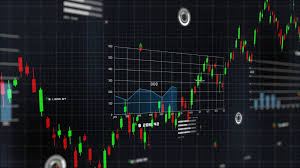
Mastering Crypto Trading Timing: Effective Strategies for Success
Crypto Trading Timing is an essential aspect that every trader must understand to maximize profits and minimize losses. The cryptocurrency market is highly volatile, with rapid price changes occurring at any moment. Traders often find themselves at a crossroads, wondering when is the optimal time to buy or sell their assets. This article will delve into the significance of timing in crypto trading, various strategies to enhance your timing skills, and tools that can aid you in making informed decisions. For more insights, check out Crypto Trading Timing https://www.carlagericke.com/author/carla/page/22/.
The Importance of Timing in Crypto Trading
In the realm of cryptocurrency, timing is everything. The ability to enter and exit trades at the right moment can determine the difference between a successful investment and a substantial loss. Unlike traditional stock markets, cryptocurrency markets are open 24/7, meaning opportunities arise at all hours. Trading with a well-thought-out timing strategy can help traders navigate these turbulent waters and capitalize on price movements.
Understanding Market Cycles
Crypto markets experience various cycles that impact asset prices. Understanding these cycles can significantly enhance a trader’s timing strategy. There are generally four phases in a market cycle:
- Accumulation Phase: This phase occurs after a prolonged downtrend when prices stabilize. Traders often accumulate assets in anticipation of a price increase.
- Uptrend Phase: After accumulation, the market enters an uptrend. Prices rise as more buyers enter the market, creating momentum.
- Distribution Phase: This phase marks the transition where early buyers start to sell their assets to secure profits. Prices may stabilize or begin to decline.
- Downtrend Phase: Following distribution, the market may experience a downtrend, often triggered by increased selling pressure.
Identifying which phase the market is currently in can dramatically help traders choose when to enter or exit positions.
Technical Analysis for Better Timing

One of the most critical tools in determining the optimal timing for trades is technical analysis. This method involves analyzing historical price data and charting patterns to forecast future price movements. Here are some popular technical analysis tools that can aid in timing trades:
- Moving Averages: Moving averages smooth out price data to help identify trends. Traders often use the crossover of short-term and long-term moving averages to signal entry or exit points.
- Relative Strength Index (RSI): RSI measures the speed and change of price movements and determines whether an asset is overbought or oversold, assisting in timing decisions.
- Bollinger Bands: This indicator uses standard deviations to highlight price volatility, offering insights into potential price corrections and suitable entry or exit points.
Fundamental Analysis and Market Sentiment
While technical analysis provides insight based on price movements, fundamental analysis looks at the reasons behind those movements. Understanding the fundamentals of a cryptocurrency, including its use case, technology, and the team behind it, influences timing decisions. Additionally, market sentiment significantly impacts price movements. Traders can gauge sentiment through social media trends, news articles, and community sentiment indicators. Keeping an eye on these elements will provide a holistic view for timing trades effectively.
Emotional Discipline and Timing
Timing is not just a technical or fundamental issue; it also involves emotional discipline. Many traders succumb to fear and greed, leading to poor timing decisions. Developing a disciplined trading plan that includes well-defined entry and exit points can help traders stick to their strategies, even during volatile market conditions. This discipline is crucial for enhancing timing and making rational decisions rather than emotional ones.
Backtesting Strategies for Improved Timing
Before applying any timing strategy in live trading, it is advisable to backtest it using historical data. Backtesting involves simulating trades based on historical prices to gauge how well a strategy would have performed in different market conditions. This process can provide valuable insights and bolster confidence when implementing the strategy in real-time trading.
Conclusion
Crypto Trading Timing is undeniably a key factor in achieving success in the cryptocurrency market. By understanding market cycles, employing technical and fundamental analysis, maintaining emotional discipline, and backtesting strategies, traders can significantly improve their timing skills. The dynamic nature of the crypto market requires traders to stay informed and adaptable, as timing can swiftly change the outcome of any trade. As you embark on your crypto trading journey, remember that perfect timing may be elusive, but by honing your skills and strategies, you can enhance your potential for success.